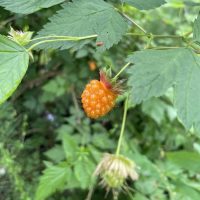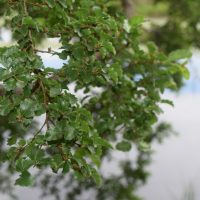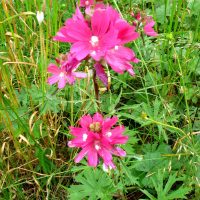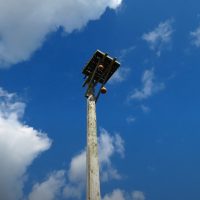How Virtual Programs Have Supported Our Community Over The Past Year

In March of 2020, in-person gatherings were shut down as the COVID-19 pandemic had just begun. Program offerings at our gardens and all over the world ceased, but the demand for educational opportunities only increased while people diligently stayed home. Flash forward two months, the UW Botanic Gardens offered our first ever adult education class on a virtual platform. Unsure of how the class would go, all 29 people registered for the previously planned in-person class “Gardening with the Seasons: Spring,” logged onto Zoom.
Read moreEarly Summer Selected Cuttings at the Washington Park Arboretum

1) Acer palmatum ‘Nuresagi’ Japanese Maple
Now that the vivid colors of the emerging foliage of Japanese Maples have faded, it is time to appreciate the summer beauty of the sometimes, very colorful samaras (winged achene containing the maple seed).
Not all Japanese Maples produce showy samaras, but some cultivars are known specifically for this.
Acer palmatum ‘Nuresagi’ (“nuresagi” translates to “wet heron”) is located at the edge of the Upper Woodland Garden Pond.
June 2021 Plant Profile: Salmonberry

As we look forward to the warmth of the summer, let’s take a moment to appreciate one of the first berries that ripens in our region – salmonberry. The scientific name is Rubus spectabilis and is appropriately named for its showy flowers and berries. The genus Rubus is derived from ruber, the Latin word for red, while spectabilis is Latin for spectacular, notable, or showy.
Read moreMiller Library Celebrates Pride with a Special Selection of Books

The Miller Library staff celebrates Pride Month with a collection of our best resources by and about LGBTQ gardeners and plantspeople. Throughout the month of June, watch for Facebook posts highlighting our favorite titles. Borrowers can also place holds on specific items from the catalog list, and view the covers using our online shelf browse tool.
Choosing these titles was challenging.
Read moreTrees of the Lagoon

The peninsula north of the Linden Parking Lot (#16) is sometimes referred to as the Lagoon. Enjoy these trees while walking, birding, viewing wildlife, or boating.
1) Nothofagus antarctica Antarctic Beech
This tree is native to southern Chile and Argentina.
A deciduous tree with shaggy bark and small glossy leaves can be found north of the canoe launch.
It was once believed to be the southernmost growing tree on Earth until 2019, when a Nothofagus betuloides was found on the same island just slightly further south on Hornos Island, Chile.
Prime Prairie Time

Only 90 minutes south of Seattle is an exquisite but threatened habitat: the South Sound Prairies. Prior to the arrival of Euro-American settlers, the Northwest prairie ecosystem west of the Cascades thrived under management by Native Americans, from Oregon’s Willamette Valley north to the San Juan Islands and into southwestern British Columbia. Today, less than 3% of that original habitat survives, and plants dependent on the prairies’ unique soil and topography require vigorous protection.
Read moreSpring is officially under way in the lovely Pacific Northwest!

Here’s a small peek at a few of the many plants here at the Washington Park Arboretum that are showing off their unique spring features.
1) Cercis canadensis Eastern Redbud
One can’t help but admire this small, often multi-stemmed flowering tree as its glowing, purple-pink buds break out in spring through early summer.
With stunning cultivars such as ‘Appalachian Red’ and ‘Forest Pansy’ being highlighted in botanic gardens and arboreta, popularity has soared over the past several decades.
“Gourds Go Up” by Connie Sidles

On Tuesday, March 23rd, Arborist Shea Cope found himself swaying 30 feet high on the Osprey nest pole near the Loop Trail at Union Bay Natural Area. He had climbed to the top of the pole using first a ladder and then tree-climbing spurs. Now he called down to his arborist colleague, Clif Edwards, “Send up the gourds.”
Attaching two specially-prepared gourds to a system of wires and pulleys, Clif sent them flying up.
Read moreMay 2021 Plant Profile: Ficus carica ‘Desert King’

If you have ever plucked a ripe fig straight from the tree, the sap oozing from the jam-like interior and suspended at the bottom of the fruit, you know that you have to grow your own figs to fully appreciate their wonder.
Read moreViburnum: A Starring Role in Science

The next time you treat yourself to a walk through the inviting grounds of UW Botanic Gardens, take a moment to appreciate that the flowers and trees play an important role in scientific research–with implications for plants and research institutions all over the world.
“We get requests for plant materials from researchers and institutions about 10 times a year,” reports Raymond J.